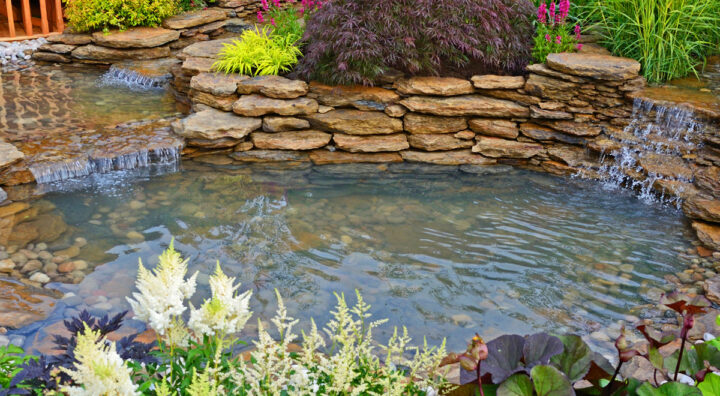
Follow our guide to ensure your pond is clean and healthy
A beautiful pond can be a relaxing and serene addition to any outdoor space. However, if your pond is green and murky, it can quickly become an eyesore and a breeding ground for mosquitoes and other unwanted pests. Luckily, there are several steps you can take to keep your pond clean and clear.
- Install a pond filter: A pond filter is essential for maintaining water quality and clarity. It removes debris, excess nutrients, and other contaminants from the water, which can cause algae growth. Many types of pond filters are available, including biological filters, mechanical filters, and UV clarifiers. Choose the type that best suits your pond’s size and needs. The most popular pond filters are pressure filters that combine biological, UV, and mechanical filtration into one. If you need help with this, please get in touch with your nearest dealer.
- Add aquatic plants: Aquatic plants not only enhance the beauty of your pond but also help keep it clean. They absorb excess nutrients from the water, which can cause algae growth. They also provide shade, which helps keep the water temperature cool and reduces the sunlight that reaches the pond’s bottom.
- Remove excess debris: Leaves, dust, and other debris can quickly accumulate in a pond in a sludge layer on the bottom, contributing to poor water quality. Use a net or skimmer to remove debris floating on the water’s surface regularly. You can use beneficial bacteria and enzymes to break down the sludge layer or regularly vacuum out the sludge, leaves, and debris that accumulate on the bottom of the pond.
- Control fish population: Fish can be an entertaining addition to your pond, but too many can cause problems. Fish waste can contribute to nutrient buildup in the water, leading to algae growth. A general rule of thumb is to have no more than one inch of fish per square foot of pond surface area.
- Limit sunlight exposure: Algae thrive in sunlight, so limiting the amount of sunlight that reaches the pond can help prevent algae growth. Planting trees or adding a shade cover can provide the necessary shade to keep the water cool and reduce algae growth.
- Test and balance water chemistry: Regularly testing your pond’s water is essential to maintaining its health. Test kits can monitor pH, ammonia, nitrite, and nitrate levels. If the levels are out of balance, you may need to add chemicals or adjust the water’s pH to return to a healthy range.
